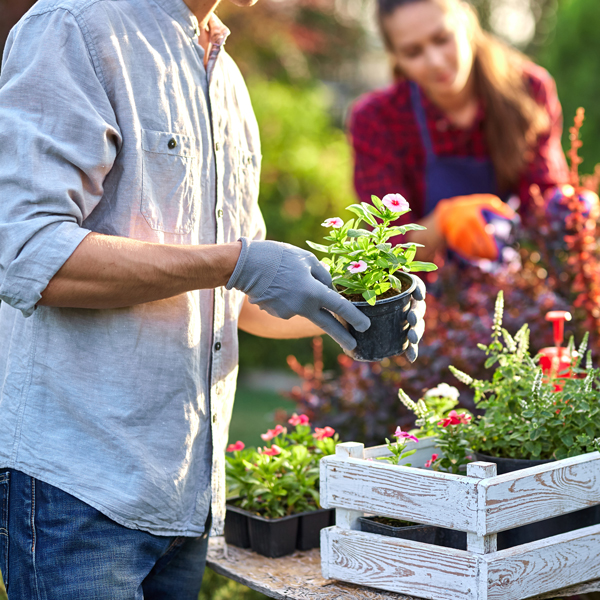From Seed to Grow: A Novice's Overview to Horticulture Success
:max_bytes(150000):strip_icc()/close-up-of-a-women-watering-vegetables-in-a-raised-bed-1407277094-c63fd1ff0a21406ebf17c51ac6c6f2d1.jpg)
Picking the Right Seeds
To make certain a successful yard, you need to choose the right seeds for your expanding conditions and wanted plants. Various plants prosper in different climates, so it's essential to choose seeds that are appropriate for your certain area. On the various other hand, if you live in a cooler environment with much shorter growing periods, look for seeds that have a much shorter maturation duration.
Another element to take into consideration is the type of dirt in your yard. Some plants like sandy dirt, while others thrive in clay or loamy soil. Recognizing the structure of your dirt will assist you select seeds that will certainly grow well in your garden. Furthermore, consider the quantity of sunshine your garden gets. Some plants, like tomatoes and peppers, need complete sun to grow, while others, such as leafy greens, can endure partial color.
If you're interested in blossoms, pick seeds for plants that will certainly enhance each various other in terms of shade, height, and bloom time. By meticulously choosing the best seeds for your expanding conditions and desired plants, you'll establish on your own up for a successful yard.
Preparing the Soil
Since you have actually picked the best seeds for your garden, it's time to prepare the dirt for optimum growth. Preparing the soil is an essential step in horticulture success, as it supplies the structure for your plants to thrive.
Start by eliminating any type of weeds or debris from the area where you intend to plant (gardening tips for beginners). Weeds can take on your plants for nutrients and water, so it is necessary to remove them before planting. Make use of a garden fork or hoe to loosen up the dirt, separating any globs and developing a loose, brittle texture
Next, it's time to boost the soil's fertility. Add natural issue, such as compost or well-rotted manure, to enhance the dirt and provide crucial nutrients. Spread a layer of natural matter over the dirt and use a yard fork or rake to include it into the leading few inches. This will aid enhance water drainage, dampness retention, and nutrition availability for your plants.
Most plants favor a somewhat acidic to neutral pH, around 6.0 to 7.0. You can buy a dirt screening kit from a garden center or send out an example to a lab for analysis.
Growing and Watering Techniques
When it comes to growing, make sure to follow the instructions on the seed packets or plant tags. Different plants have various needs for growing depth and spacing.
It is vital to water your plants properly to promote healthy development. The secret is to offer enough water without sinking the plants. When watering, goal to moisten the soil equally, making sure that the water reaches the plant's origins.
To figure out when to water, check the moisture level of the dirt by inserting your finger concerning an inch deep. It's time to water if it really feels dry. Take into consideration using a watering can or a tube with a gentle have a peek at this website spray nozzle to read the article avoid harmful fragile plants.
Nurturing and Preserving Your Yard
Nurturing and maintaining your yard is critical in order to keep your plants thriving and healthy. Regularly get rid of any type of unwanted plants that might complete with your yard for nutrients and area. Applying a layer of compost around your plants assists conserve dampness, reduce weeds, and control soil temperature.
Harvesting and Delighting In the Fruits of Your Labor
When can you begin enjoying the benefits of your effort in the garden? The answer depends upon the kind of plants you have actually grown. Some vegetables, like lettuce and radishes, can be collected as soon as they get to a preferable dimension (gardening tips for beginners). Others, such as peppers and tomatoes, need a longer growing season prior to they are all set to be chosen.
To identify if your veggies are all set for harvest, you require to look for specific signs. They ought to quickly separate from the creeping plant when delicately pulled.
When harvesting, it is essential to make use of the correct devices and strategies. A sharp set of pruning shears or a garden knife can be utilized to click reference easily reduce vegetables from the plant. Be sure to gather in the early morning when the temperatures are cooler, as this will certainly help preserve the quality of your produce.
As soon as you have actually gathered your vegetables, it's time to enjoy the fruits of your labor. Fresh chosen veggies can be utilized in a selection of tasty meals, from salads to stir-fries. Conversely, you can maintain your harvest by canning, cold, or drying them to appreciate throughout the year.

Final Thought
By following these beginner-friendly strategies, you are well on your method to supporting a thriving yard. Keep in mind to provide your plants the treatment and attention they need, and soon you will be enjoying the beauty and bounty of your extremely own yard.
To make certain a successful garden, you require to select the best seeds for your growing problems and preferred plants. By carefully picking the appropriate seeds for your growing problems and preferred plants, you'll establish on your own up for a successful garden.
Weeds can complete with your plants for nutrients and water, so it's important to get rid of them before planting. When it comes to planting, make sure to comply with the guidelines on the seed packages or plant tags. Various plants have various needs for planting depth and spacing.